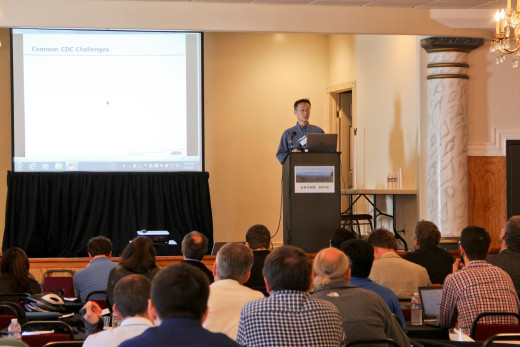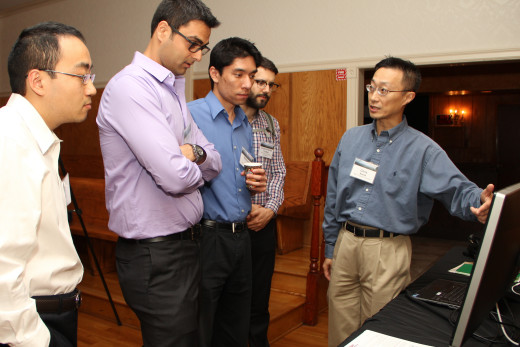ASYNC 2015: The Most Important CDC Conference You’ve Never Heard Of
Because Clock Domain Crossing (CDC) verification has been around for well over a decade, it’s tempting to think that CDC has attained the status of “solved problem”. However, with today’s SoCs employing over 50 independent clocks, the reality is that CDC verification is only getting more challenging. Hence, this is why Mentor R&D seeks to stay ahead of the curve by attending cutting edge academic events that most of us have never heard of. Case in point: the recent 21st IEEE International Symposium on Asynchronous Circuits and Systems — “ASYNC” for short.
At this year’s ASYNC, Mentor CDC R&D lead Chris Kwok reached out to the academic community with a presentation on “Hunting Asynchronous CDC Violations in the Wild”. In a nutshell, Chris updated the researchers on the state of CDC in the commercial EDA world. After providing this market snapshot, Chris went on to describe how the audience’s innovations will be most welcome as the number of clock domains – and the interactivity and dependencies between multiple domains like clock and reset signaling — continues to increase.
It was readily apparent that Chris’ remarks were well received given the detailed questions he fielded immediately after his presentation, and by the stream of visitors to the Mentor Graphics’ demo table.
Indeed, as my colleague noted, “The attendees I talked to had some really intriguing ideas around the core analysis technologies that will be needed for CDC verification at advanced nodes. It’s sparked some new thinking about some particularly thorny issues my team has been working on.”
In summary, the event was an interesting reminder of all the science that goes into the core of each Questa CDC release, enabling Mentor to stay ahead of our customers’ toughest technical challenges.
Until next time, may your clock domains be synchronized, and reset signaling be properly buffered,
Joe Hupcey III
Reference link: the ASYNC conference website http://ee.usc.edu/async2015/
P.S. Do you dream about improving your flip-flop’s tau figure? Do you calculate MTBF’s in your spare time? Are you frustrated that your colleagues can’t appreciate that synchronizers and data flip-flops ARE different? If you answered “yes” to any one of these questions, the Questa CDC team would like to invite you to apply for an opening in R&D in Mentor’s Fremont, CA office:
http://chk.tbe.taleo.net/chk04/ats/careers/requisition.jsp?org=MENTOR&cws=1&rid=3462




